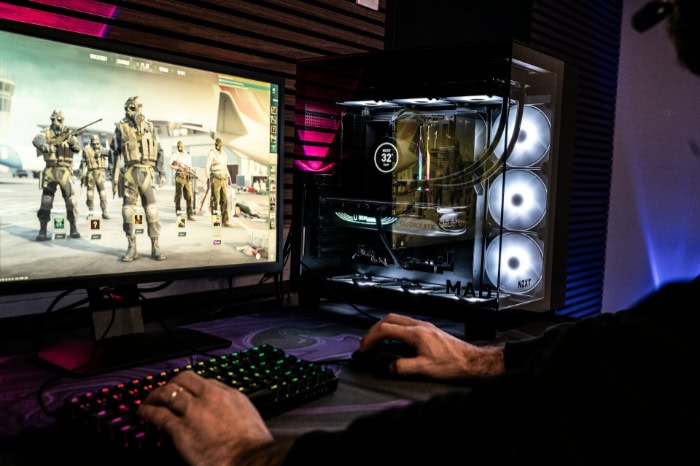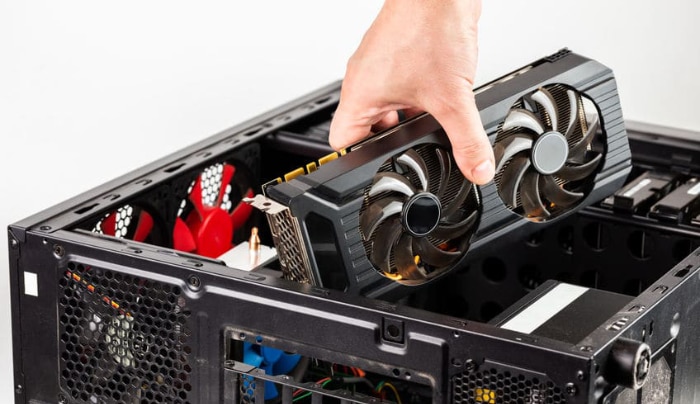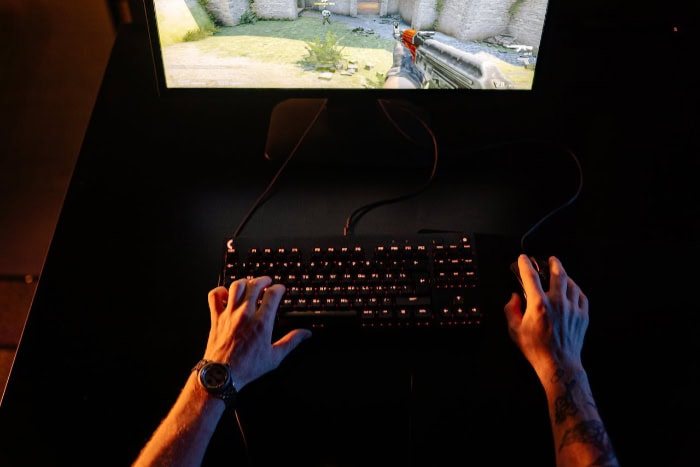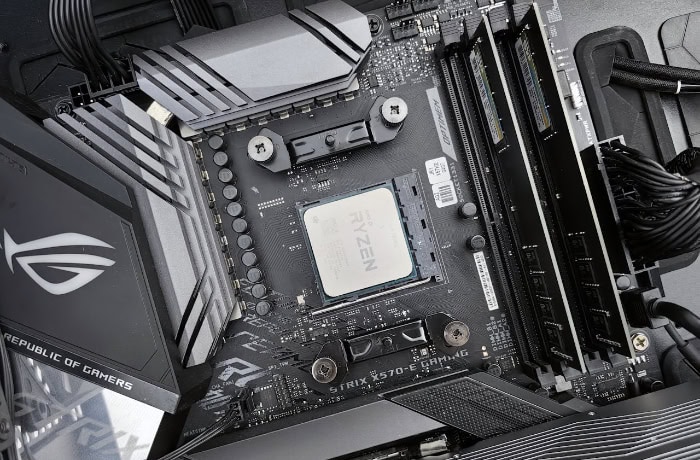Is 120 FPS Good for Gaming? A Brief Exploration

Gaming is all about immersion, and few aspects play a bigger role in shaping your experience than frame rate. Frames per second (FPS) determines how fluid and responsive your games feel, directly influencing how you perceive motion and interact with the virtual world.
Among the widely discussed benchmarks, 120 FPS has emerged as a gold standard for smooth, responsive gameplay. But is it worth aiming for?
From the precision required in competitive shooters to the cinematic beauty of open-world adventures, having a higher FPS can elevate your gaming to a new level.
Whether you're chasing victory in esports or simply seeking incredible motion clarity, 120 FPS offers significant benefits. However, it also comes with hardware demands and trade-offs.
How FPS Shapes Your Gaming Experience
Frames per second refers to the number of individual images (or frames) that your system can render and display each second. Essentially, it determines how quickly your game refreshes to show motion on the screen.
A higher FPS means smoother movement because more frames are packed into each second, resulting in a more fluid transition between actions.
For example, if you’re playing a game at 30 FPS, your screen shows 30 distinct images in one second, which might feel a bit choppy, especially in fast-paced scenarios.
On the other hand, running a game at 120 FPS means your screen is displaying four times as many frames in the same period.
This increased frame rate creates a lifelike sense of motion and makes the gameplay feel more responsive.
Relationship Between FPS and Screen Refresh Rates
Frames per second doesn’t exist in isolation, it works hand-in-hand with your monitor’s refresh rate. Your monitor’s refresh rate, measured in hertz (Hz), dictates how many times per second it can display a new image.
For instance, a 60Hz monitor refreshes 60 times per second, so even if your system is capable of running games at 120 FPS, the monitor will only display 60 frames, effectively bottlenecking the experience.
To fully harness the benefits of higher FPS, like 120 FPS or above, you’ll need a monitor with an equally high refresh rate, such as 120Hz or 144Hz. Pairing the two ensures every frame rendered by your system is displayed on-screen, maximizing smoothness and responsiveness.
Without matching refresh rates, you lose out on the performance improvements that higher FPS offers.
Visual Differences Between Different Framerates
The impact of FPS on visual quality is stark. At lower frame rates, rapid movements—like turning your camera in a first-person shooter or speeding through tracks in a racing game—can appear jittery or blurred.
This slight lag in image updates disrupts immersion and may even affect gameplay precision, especially in action-heavy or competitive games.
When you bump FPS to 60, the motion becomes noticeably smoother. Movements feel more natural, and details in high-speed sequences are easier to track.
However, the jump from 60 to 120 FPS takes things to a whole new level. This upgrade reduces motion blur, sharpens fast-moving objects, and creates an almost seamless flow of action on screen.
High FPS also impacts how the game “feels.” Controls become more responsive, and input lag, the delay between a command and its execution on screen—diminishes.
For gamers, these aspects are just as important as how the game looks visually, making 120 FPS an enticing option for those seeking peak performance.
Gaming Performance Impact

Gaming is more than just visuals on a screen, it’s an interactive experience where performance directly influences how enjoyable and competitive your sessions can be. Achieving 120 FPS not only enhances the way games look but also elevates how they feel in terms of responsiveness and control.
From swift reactions to improved clarity during fast-paced action, higher frame rates can significantly affect your overall performance and enjoyment.
Input Lag and Response Time Benefits
Input lag refers to the delay between when you press a button or move a controller and when that action is reflected in the game. Lowering input lag is crucial for immersive gameplay, especially in scenarios where precision and timing are critical.
Running a game at 120 FPS drastically reduces input lag because your system updates frames more frequently, ensuring that your inputs are processed almost instantly.
For example, in a fast-paced shooter, pressing the trigger to fire a weapon feels snappier and more immediate at 120 FPS compared to lower frame rates. This responsiveness allows you to react more quickly to sudden changes in the game, giving you a tangible advantage in high-pressure situations.
When milliseconds can mean the difference between victory and defeat, faster frame rates deliver a smoother and more reactive experience.
Motion Clarity and Smoothness
One of the most noticeable advantages of higher FPS is the improvement in motion clarity. At lower frame rates, rapid camera movements or fast-moving objects can appear blurry and disjointed.
This can make it harder to track enemies, read animations, or process chaotic in-game sequences.
Boosting your frame rate to 120 FPS provides a much smoother visual flow, where transitions feel seamless and actions look more precise.
Games with intricate environments or complex animations benefit significantly from this clarity. Racing down a track, dodging an enemy's attack, or turning a corner in a high-speed chase all feel more fluid and natural, bringing a new level of realism to the experience.
The combination of smoothness and visual sharpness ensures that high-intensity moments are not only visually stunning but also easier to follow.
Competitive Gaming Advantages
For competitive gamers, every slight edge counts. High FPS can provide a major performance boost for those who play at a professional or semi-professional level.
In competitive games like first-person shooters, battle royales, or MOBAs, success often depends on your ability to react faster than your opponent. With 120 FPS, animations are more precise, hit registration is more accurate, and gameplay feels significantly tighter.
High frame rates also reduce distractions like motion blur or tearing, allowing you to focus entirely on gameplay. This focus translates into faster decision-making and more accurate execution of strategies.
Additionally, the responsiveness linked to 120 FPS enhances hand-eye coordination during crucial moments, such as landing headshots or executing perfectly timed maneuvers. While skill remains the most important factor, the smoother experience provided by higher FPS can amplify your gameplay potential.
Impact on Different Game Genres
Frame rate demands vary greatly depending on the type of game you play. Fast-paced titles, such as competitive shooters and racing simulators, benefit the most from higher FPS.
In shooters, aiming and reaction times are directly tied to how quickly and accurately you can interpret what’s happening on-screen. Racing games rely on smooth visuals to ensure corners and obstacles are visible without visual stutter, making high frame rates a must.
On the other hand, slower-paced genres like strategy games, role-playing games, or narrative-driven adventures may not always require 120 FPS to feel enjoyable. These games often prioritize cinematic storytelling or detailed world-building, where higher resolutions or better visual effects might take precedence over extremely high frame rates.
However, even in these genres, a smoother experience can enhance immersion during combat sequences or action-heavy moments.
Whether you're playing to compete or simply enjoy a more fluid experience, higher FPS brings tangible performance benefits that can elevate any gaming session.
Hardware Requirements

Achieving 120 FPS in modern games demands more than just an average gaming setup. It requires hardware capable of handling the computational load while delivering frames quickly and consistently.
Every component in your system, from the GPU to the monitor, must work together to create a seamless, high-performance experience.
GPU and CPU Considerations
The graphics processing unit (GPU) is arguably the most important piece of hardware for running games at higher frame rates. A powerful GPU is essential for rendering frames quickly, especially at higher resolutions like 1080p, 1440p, or 4K.
Older or budget-tier GPUs may struggle to push 120 FPS, particularly with modern games that demand more graphical horsepower. Mid-range to high-end GPUs are typically necessary to maintain consistent frame rates at this level while still enjoying good visual quality.
The central processing unit (CPU) also plays a critical role. Certain game genres—particularly open-world and simulation games—rely heavily on the CPU to manage complex calculations, such as AI behaviors, physics, and world interactions.
A weak or outdated CPU can bottleneck performance, even if you have a strong GPU, as the system cannot process instructions fast enough to keep up with 120 FPS requirements. Modern multi-core CPUs with high clock speeds are best suited for this kind of performance, ensuring smooth gameplay without stutters or drops in frame rate.
Monitor Specifications Needed
A high-performance monitor is essential for fully utilizing 120 FPS. The monitor’s refresh rate determines how many frames it can actually display per second.
For example, a 60Hz monitor can only show 60 frames, regardless of how powerful your hardware is. To match the 120 FPS goal, your monitor should have a refresh rate of at least 120Hz or higher.
Additionally, technologies like G-Sync (NVIDIA) or FreeSync (AMD) can help synchronize your monitor’s refresh rate with your GPU’s output, reducing screen tearing and creating a smoother visual experience. Response time is another factor to consider, as slower monitors may introduce ghosting or motion blur during fast-moving sequences.
Monitors with a response time of 1ms to 4ms are ideal for gaming at higher frame rates. Resolution is another consideration—while 1080p is the easiest to achieve at 120 FPS, higher resolutions like 1440p or 4K may require more powerful hardware to sustain the same frame rate.
System Memory and Storage Impact
System memory, or RAM, also contributes to maintaining higher frame rates. Modern games often demand 16GB of RAM at a minimum to run smoothly, and for achieving and maintaining 120 FPS, 16GB or 32GB is recommended, depending on the complexity of the games you play.
RAM ensures that the system can handle large amounts of data being processed in real time, such as textures, assets, and ongoing calculations, without creating bottlenecks.
Storage type also impacts overall performance, particularly loading times and how quickly assets are streamed into the game. Solid-state drives (SSDs) are significantly faster than traditional hard disk drives (HDDs), reducing delays caused by asset loading.
While storage doesn’t directly affect FPS, a fast SSD ensures that your system doesn’t stutter when loading new areas or textures mid-session, which can disrupt your gaming experience. For smooth gameplay at 120 FPS in modern, graphically intensive games, an SSD is practically a necessity.
Visual Quality Trade-Offs

Gaming often involves striking a balance between visual fidelity and performance. While achieving 120 FPS delivers exceptional smoothness and responsiveness, it sometimes requires sacrifices in visual quality, depending on your hardware and the game being played.
Understanding how resolution, graphics settings, and other factors impact performance is essential to make the most out of your gaming setup while maintaining a visually appealing experience.
Resolution vs Framerate Balance
Resolution and frame rate work against each other in terms of performance demands. Higher resolutions, such as 1440p or 4K, deliver sharper and more detailed visuals but require substantially more processing power from your GPU and CPU.
As resolution increases, your system must process and render more pixels per frame, which can reduce the achievable frame rate.
To maintain 120 FPS, many gamers opt for 1080p resolution, which provides crisp visuals while being less taxing on hardware. Meanwhile, 1440p is a middle ground for those who want enhanced image quality without compromising too much on performance.
On powerful gaming systems with high-end GPUs, 120 FPS at 4K is achievable, but this often comes at a higher cost. Choosing the ideal resolution depends on your hardware’s capabilities and your personal preference for clarity versus smooth gameplay.
Graphics Settings Optimization
Modern games come with extensive graphics settings that allow players to adjust various visual features, such as shadows, textures, lighting, and effects. Lowering certain settings can significantly boost frame rates without drastically impacting how the game looks.
For example, reducing shadow quality or post-processing effects like motion blur often provides a noticeable performance gain while keeping the core visual experience intact.
Certain settings, such as texture quality and anti-aliasing, may need to be adjusted depending on the resolution you’re targeting. Higher resolutions naturally improve image sharpness, reducing the need for features like anti-aliasing, which smooth out jagged edges.
Tailoring your graphics settings to focus on what matters most—such as maintaining 120 FPS—ensures a satisfying balance between visual richness and performance.
Many games also include built-in presets like low, medium, high, or ultra. Manually tweaking individual settings or starting with a preset and making minor adjustments allows you to find the sweet spot that aligns with your hardware’s performance capabilities.
The goal is to selectively prioritize elements that enhance gameplay without overburdening your system.
Power Consumption Considerations
Higher frame rates place greater demand on your hardware, leading to increased power consumption. GPUs and CPUs working harder to maintain 120 FPS require more electricity, often resulting in higher temperatures and fan speeds.
This can make your system louder and less energy-efficient during extended gaming sessions.
Gamers who prioritize performance may invest in efficient cooling solutions to manage heat and ensure hardware longevity. However, it’s worth noting that laptops or compact PCs may face additional challenges with power consumption and heat dissipation compared to desktop systems.
For players concerned about energy usage, lowering graphics settings or settling for a slightly lower frame rate, such as 90 FPS, can provide a compromise between performance and power efficiency.
Efficient power management becomes especially relevant in competitive gaming, where systems are often pushed to their limits. While the pursuit of 120 FPS provides undeniable gameplay benefits, optimizing your setup to find a balance between performance, visuals, and energy use is an important part of the process.
The Price of Performance

Pursuing 120 FPS in gaming delivers a smoother, more responsive experience, but it often comes with a significant price tag. Achieving this performance level requires investing in high-quality hardware, and the costs can vary based on your current setup and the games you play.
Hardware Investment Requirements
Upgrading to a setup capable of running games at 120 FPS often means focusing on core components like the GPU, CPU, and monitor. For many gamers, the GPU is the largest expense, as mid-range cards may not consistently reach 120 FPS in modern titles, especially at higher resolutions.
High-performance GPUs, such as those designed for 1440p or 4K gaming, are often necessary, and their cost can be considerable.
The CPU should also be capable of keeping up, particularly for games that place heavy demands on processing power. If your current processor is underpowered, upgrading to a modern multi-core CPU is a must.
A compatible motherboard and a sufficient power supply may also be needed, further increasing the investment. Additionally, a high-refresh-rate monitor with at least 120Hz is essential, which can add to your expenses if your current display isn’t up to the task.
Performance Gains vs. Expense
The performance improvements provided by 120 FPS are undeniably impressive. Faster frame rates reduce input lag, enhance motion clarity, and make gameplay feel more fluid and responsive.
For competitive gamers, this performance can directly impact reaction times and precision, offering a tangible advantage in fast-paced games. Even for casual players, smoother visuals can significantly enhance immersion and enjoyment.
However, achieving these benefits often requires considerable spending. Choosing slightly lower frame rates, such as 90 FPS, or sticking to 1080p resolution can reduce costs significantly while still offering smooth gameplay.
If your current system can run games at 60 FPS reliably, the leap to 120 FPS may feel less dramatic for non-competitive titles. Balancing what you’re willing to spend with the advantages you gain is crucial to finding the sweet spot between performance and expense.
Long-Term Gaming Experience Value
While the upfront cost of upgrading for 120 FPS gaming can be steep, the long-term value it provides cannot be ignored. Modern games are increasingly optimized for high frame rates and better responsiveness, and future titles are likely to continue this trend.
Investing in hardware that can handle 120 FPS not only enhances today’s gaming experience but also ensures your system remains capable of supporting performance-demanding games in the years to come.
Beyond gaming, a high-refresh-rate monitor and powerful hardware provide benefits for other tasks, such as video editing, streaming, or general system performance. These added uses can extend the value of your investment, making the costs feel more justified.
For gamers who prioritize smooth controls, competitive advantages, and immersive visuals, the benefits of 120 FPS often outweigh the initial expense, especially when viewed as a long-term upgrade to their setup.
Conclusion
Achieving 120 FPS in gaming opens the door to smoother visuals, faster response times, and a more immersive experience that benefits both casual and competitive players alike. From reduced input lag to sharper motion clarity, the advantages are undeniable, particularly for fast-paced genres where precision and efficiency matter most.
However, these benefits come with certain trade-offs, including hardware requirements, financial investment, and adjustments to visual settings to maintain performance.
For those willing to make the leap, the long-term value of a high-performance gaming setup ensures not only a superior experience today but also the ability to keep up with future gaming advancements.
Whether upgrading for competitive gains or simply to enhance the enjoyment of your favorite titles, 120 FPS has the potential to transform your gaming sessions into something truly exceptional.


